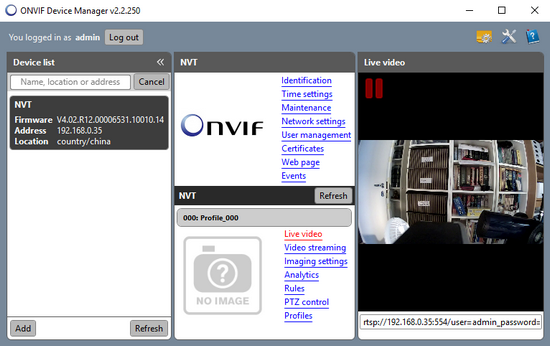
You are done! To access your camera remotely you will type the following address in any computer running Internet Explorer: (the x represent your external IP address).ĮLine ONVIF IP camera remote access setup Next stage is to go to a the website and see what your external IP is. Forward the port 82 for the IP of your NVR and forward a port range from 3000-3005 for the server port. Use the TP tool and change the HTTP port from 80 to any other port, for example we will use port 82. The default HTTP port is 80 and it is not recommended for use since some internet providers block port 80. You need to forward 2 ports, an HTTP port and Server Port. Go into the advanced settings of the router and find ‘Port Forwarding’.

We have to go to your gateway to the Internet which can be your router or modem and login into the interface of that device. The next step is to forward or open 2 ports on your gateway so your camera will be accessible from outside your network. If you are having issues with fonts, language display, or any type of display errors, you will have to reinstall the ActiveX controls. Make sure that all of the ActiveX controls are installed correctly so you can view the web-interface properly. Use Internet Explorer and type the IP address of the camera into the address bar.
#ONVIF SERVER FOR FREE#
You need to use our TP tool to find the camera on the network (the TP Series IP Camera Search tool can be downloaded for free from our website here) and then give it a static IP address. When you connect the TP camera to a network, the camera’s default IP address is 192.168.1.2. TP series ONVIF IP camera remote access setup Remember, that this type of connection is very limited and I will always recommend having an NVR with cameras connected to it rather than having a standalone camera.
#ONVIF SERVER HOW TO#
I am going to teach you how to do it with 2 of our camera types: TP series cameras and eLine series cameras. The most desired feature of any CCTV system is to remote access your system from a distant location so you can view your cameras. Our ONVIF cameras can hold an SD card which will store your recorded footage, and our TP series ONVIF IP cameras have a pigtail with multiple inputs that will open a lot of options of a standalone security camera. But, it makes that camera a great choice when a standalone setup is desired. The ONVIF IP cameras are a little tricky to set up when working with an NVR since ONVIF is a standard that is not fully supported by surveillance systems manufacturers. But, now I want to talk about our ONVIF IP cameras that have multiple features which makes them a perfect candidate for a standalone CCTV camera. For example, some of our EL series cameras can work as standalone but do not have storage to record the video footage. The downside is that some cameras do not have all the features that the NVR has, and some cameras are just designed to work with an NVR and not as a standalone.
Each camera can operate individually as a CCTV system. It is not hard to do since all the cameras that we sell support a standalone operation. Mainly customers don’t want an over-sophisticated surveillance system, but would prefer a solution using one or two cameras.


A few of our customers showed interest of connecting a standalone IP camera without using an NVR.


 0 kommentar(er)
0 kommentar(er)
